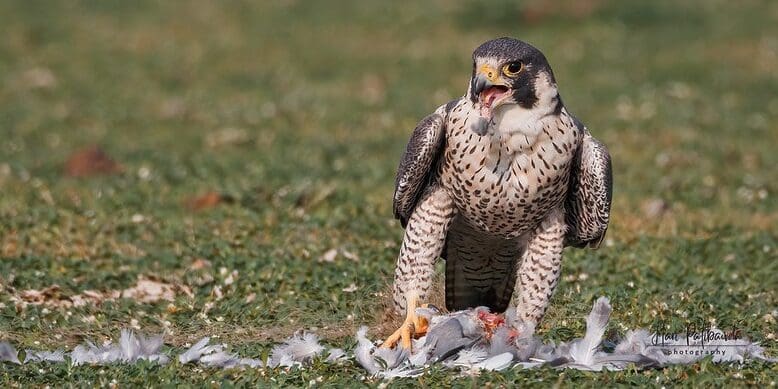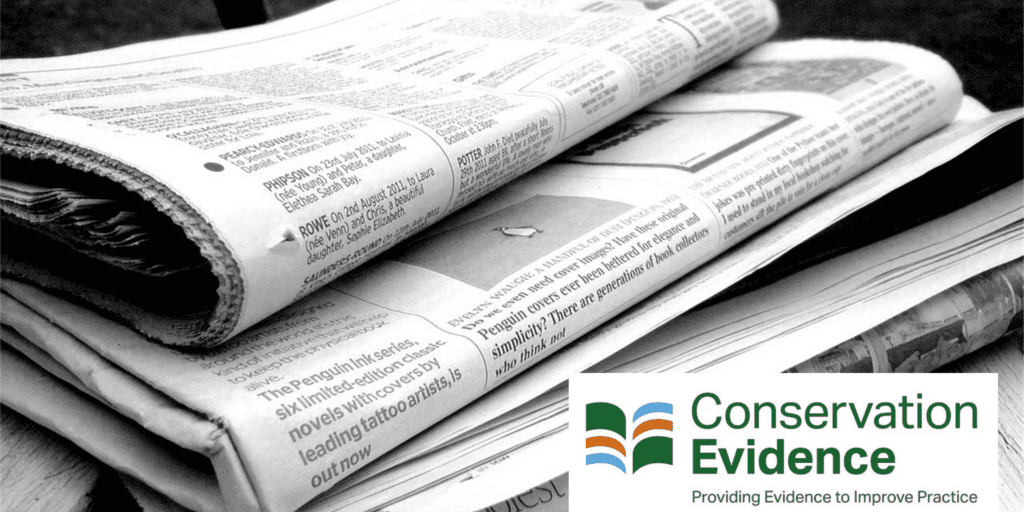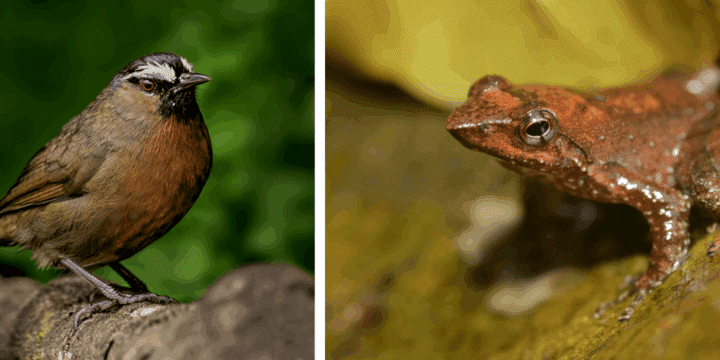The untapped side of science that could boost evidence-based conservation
Tatsuya Amano is an Australian Research Council Future Fellow based at the University of Queensland, Australia. Tatsuya is committed to generating and transferring scientific knowledge on biodiversity changes and its conservation. His translatE project (https://translatesciences.com/) aims to understand the consequences of language barriers in biodiversity conservation.
On a quiet day over ten years ago in Cambridge, I was writing the summary of a paper reporting the creation of roof-top breeding sites for little terns (Sternula albifrons). Many people in the same lab were similarly writing paper summaries for the Conservation Evidence project, but there was one critical difference—the paper I was summarising was written in Japanese.
Our new research (Amano et al. 2021) tested how such scientific evidence that is available only in a non-English language can contribute to evidence-based conservation.

Facilitating evidence-based conservation globally is key to tackling the ongoing biodiversity crisis. Collections of existing evidence from a countless number of scientific journals are of tremendous help for those who seek to use evidence for their conservation decisions. But we are also starting to realise that evidence on what works in conservation is still desperately lacking globally. Most of the available evidence is found in Europe and North America, and not in some of the most biodiverse regions where conservation is needed the most, such as Latin America (Christie et al. 2020). Then what would you do if you were a practitioner in, say, Brazil, who is keen to use scientific evidence to save your local species?
As someone originally from Japan, I have long known that much scientific knowledge is also published in Japanese. What I didn’t know was whether this was applicable to other languages. In 2016 we found that over one-third of scientific documents on conservation were published in languages other than English (Amano et al. 2016). In late 2017, we quietly started an ambitious plan—identifying papers published in non-English languages that test the effectiveness of conservation actions. The project soon became a global collaboration involving over 60 people, who are collectively native speakers of 17 languages. We screened a total of 419,679 peer-reviewed papers published in 16 languages to identify papers that test conservation actions.
What 419,679 papers in 16 languages have told us
What we found, after three years of work, was astonishing. We identified 1,234 relevant studies published in non-English languages, certainly not a negligible number, compared to 4,412 English-language studies stored in the Conservation Evidence database at the time this research was completed.
Examples of such non-English-language studies include a Spanish-language study on alleviating conflicts between livestock farmers and endangered Andean mountain cats (Leopardus jacobita) in northern Patagonia, and a Japanese-language study on the relocation of endangered Blakiston’s fish owls (Bubo blakistoni), just to name a few.
Even more surprisingly, relevant non-English-language studies are being published at an increasing rate in six languages: French, German, Japanese, Portuguese, Russian, and simplified Chinese. These findings refute a common perception that all important knowledge should be available in English in today’s globalised world because “no one” publishes in other languages anymore.
Filling gaps in evidence-based conservation
Those non-English-language studies don’t just count quantitatively. They provide unique evidence. Non-English-language studies are especially abundant in regions where English-language studies are scarce, such as Latin America, Russia, and East Asia (figure below). Similarly, many non-English-language studies are about species with little or even no relevant English-language studies. Incorporating non-English-language studies can expand the availability of scientific evidence on conserving species and ecosystems into 12-25% more areas and 5-32% more species. This is a massive jump.
This result points to the possibility of non-English-language studies being a game changer in evidence-based conservation. Understandably, practitioners tend to question whether what has been found somewhere else also applies to their local situations (Gutzat and Dormann 2020). Considering that the serious lack of local, context-dependent evidence has been a major barrier to evidence-based conservation, non-English-language studies can provide much needed evidence in those regions and for those species where English-language evidence is scarce.
However, we also found that non-English-language studies tended to use less robust study designs, meaning that the quality of evidence could be lower when compared to English-language studies. This means that we may face a trade-off between evidence quality and availability. For many species in countries where English is not widely spoken, evidence may be available only in a local language. In that case, should we use such lower-quality evidence or no scientific evidence at all? This is something we still need to investigate further.

Cultural diversity to save biodiversity
Our findings show that the Tower of Babel continues to exist in conservation; we need to overcome language barriers to make the best use of this untapped side of science. How can we do it?
The answer is simple. Involve native speakers of different languages, just like we did in this research. It has genuinely been fascinating to work with our collaborators and learn about local knowledge on conservation. We desperately need the skills, experience, and knowledge of a diverse range of people from around the world, to maximise the contribution of science to tackling the biodiversity crisis, and give us the best chance of protecting life on this planet.
In 1922, the philosopher Ludwig Wittgenstein stated, “Die Grenzen meiner Sprache bedeuten die Grenzen meiner Welt” (the limits of my language mean the limits of my world). Although he was not referring to one’s ability to understand different languages, we feel that his quote nicely describes the consequences of ignoring non-English-language science today. We should stretch the limits of our knowledge on biodiversity and its conservation by uncovering knowledge that has long been accumulating unrecognised and continues to be produced in languages other than English.
Further reading
Amano, T., González-Varo, J. P., and Sutherland, W. J. (2016) Languages are still a major barrier to global science. PLOS Biology 14: e2000933.
Amano, T., Berdejo-Espinola, V., Christie, A. P., Willott, K., Akasaka, M., Báldi, A., Berthinussen, A., Bertolino, S., Bladon, A. J., Chen, M., Choi, C.-Y., Bou Dagher Kharrat, M., de Oliveira, L. G., Farhat, P., Golivets, M., Hidalgo Aranzamendi, N., Jantke, K., Kajzer-Bonk, J., Kemahlı Aytekin, M. Ç., Khorozyan, I., Kito, K., Konno, K., Lin, D.-L., Littlewood, N., Liu, Y., Liu, Y., Loretto, M.-C., Marconi, V., Martin, P. A., Morgan, W. H., Narváez-Gómez, J. P., Negret, P. J., Nourani, E., Ochoa Quintero, J. M., Ockendon, N., Oh, R. R. Y., Petrovan, S. O., Piovezan-Borges, A. C., Pollet, I. L., Ramos, D. L., Reboredo Segovia, A. L., Rivera-Villanueva, A. N., Rocha, R., Rouyer, M.-M., Sainsbury, K. A., Schuster, R., Schwab, D., Şekercioğlu, Ç. H., Seo, H.-M., Shackelford, G., Shinoda, Y., Smith, R. K., Tao, S.-d., Tsai, M.-s., Tyler, E. H. M., Vajna, F., Valdebenito, J. O., Vozykova, S., Waryszak, P., Zamora-Gutierrez, V., Zenni, R. D., Zhou, W., and Sutherland, W. J. (2021) Tapping into non-English-language science for the conservation of global biodiversity. PLOS Biology 19: e3001296.
Christie, A.P., Amano, T., Martin, P.A., Petrovan, S.O., Shackelford, G.E., Simmons, B.I., Smith, R.K., Williams, D.R., Wordley, C.F.R., and Sutherland, W.J. (2021) The challenge of biased evidence in conservation. Conservation Biology 35: 249-262.
Gutzat, F., and Dormann, C. F. (2020) Exploration of concerns about the evidence-based guideline approach in conservation management: hints from medical practice. Environmental Management 66: 435-449.




[…] University of Queensland, Australia (previously University of Cambridge). See Tatsuya’s recent blog for more information about the project and its […]